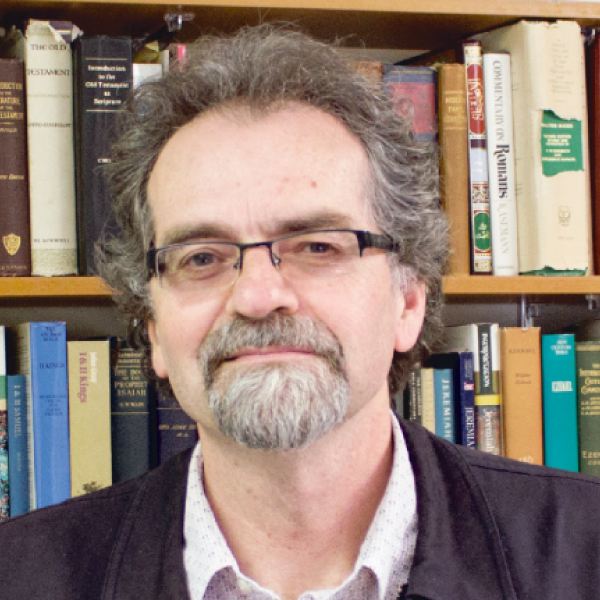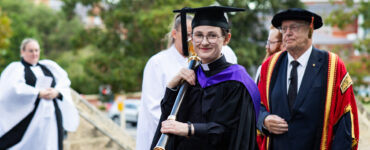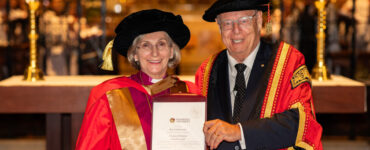This article was originally published by the ABC.
A recent Commonwealth report on the Voice acknowledged a concern that the proposed advisory body might entrench a racial identity in the Constitution. In particular, a submission from Nyunggai Warren Mundine argued that the proposed change would in effect reinstate racial segregation, rather than recognise the hundreds of First Nations who should be empowered to speak for their own country.
Several legal experts asserted to the contrary that the Voice would not entrench racial difference. Responding to the question in resolutely positive terms, the Solicitor General’s advice suggested that the change would enhance the current system of representative government by “overcoming barriers that have historically impeded effective participation by Aboriginal and Torres Strait Islander peoples in political discussions and decisions that affect them.”
This wording is, however, ambiguous in some respects, and it does not directly address the concerns expressed by Nyunggai Mundine. For the sake of clarity, the strongest version of his argument needs to be given due attention. Anything less than this will only fan the flames of the current culture wars.
A conflict of worldviews
The issue of race has potentially obscured Mundine’s key question about how the hundreds of First Nations can be reduced to a system of regional representation, within which some members of the Voice might be asked to speak for other peoples’ country.
According to Indigenous concepts of law and culture, the rights to speak for country arise from local networks of relationship and obligation that are limited to specific traditional territories. This worldview was recognised in the Mabo decision of the High Court in 1992, and recently explained with great clarity by Marcia Langton and Aaron Corn in their new book, Law: The Way of the Ancestors. Under Aboriginal tradition, Mundine should only speak about matters relating to the Bundjalung nation (arising from rights on his father’s side) and the Gumbaynggirr and Yuin nations (on his mother’s side).
And there’s the rub. When speaking to a wide public audience, Indigenous leaders appear to be exceeding the bounds of traditional law. They are making statements that potentially have consequences more generally, to use the Attorney-General’s words, for “Aboriginal and Torres Strait Islander peoples in political discussions and decisions that affect them.” This is an inevitable implication of a democratic system of government that, at least in theory, invites participation from all citizens. Accordingly, it is an express purpose of the Voice that it should enhance democratic participation. But in doing so, a conflict of worldviews arises.
Whether this conflict can be successfully mediated is something that leading political philosophers have doubted. Jürgen Habermas, for example, once concluded that that Indigenous cultures might need to be considered “external to egalitarian law” in Western societies like the United States, Canada, and Australia. This is partly because the rights that arise from ancestral connections to country are specific to each of the First Nations and cannot be universalised.
This supposedly offends some of the basic principles of liberal philosophy, as Henry Ergas has also argued, when expressing his opposition to the Voice. Among other authorities, he invokes Hannah Arendt, who observed that political problems will arise if one group of citizens possess rights that are not enjoyed by other citizens. He also mentions the first chapter in the Hebrew Bible as a founding pillar for the political idea of equality — curiously overlooking the role that Genesis 1 played in English colonial imagination.
Arendt, for her part, was reflecting on the place of Jews in Nazi Germany and Palestinians within the State of Israel, and she was sensitised to the suffering of stateless minorities when they pursued the concept of minority rights under the League of Nations. The liberal response to this set of problems lies in the aspiration to create a state in which all citizens share the same rights — and indeed, this aspiration was entirely compatible with Australia’s constitutional change in 1967. Accordingly, Ergas can cite none other than Faith Bandler in support of his own view.
The arguments advanced by Arendt could be understood to provoke a question as to whether the special rights that belong to Indigenous peoples might fuel the fires of resentment and racism. This is a real and present danger in the sphere of populist politics, so the implications of the proposed constitutional amendment need to be crystal clear.
The Constitution and the question of “race”
According to the proposed s.129 of the Constitution, the Voice will make representations “on matters relating to Aboriginal and Torres Strait Islander peoples”. Noticeably, the Bill speaks in the plural about “peoples” and not about a single race. Langton and Corn stress the point in their new book: “Indigenous Australians are not a race.” But ironically, this very point was blunted in 1967, because the Constitutional amendment was designed to enable the Commonwealth to make laws for “any race” (s.51[xxvi]). The race power has only ever been used to make laws in relation to Aboriginal and Torres Strait Islander peoples, so the legal history conflicts with the view that race does not exist. If it does not actually exist, on what basis has Commonwealth law been intervening in Indigenous lives since 1967?
Under the current Constitution, we have discovered that even the Racial Discrimination Act of 1975 can be suspended now and then at the discretion of the federal government. The Constitution in 1901 assumed the validity of race, and the upcoming referendum is not about abolishing the concept in law. The need for a Racial Discrimination Act arises from, among other things, “pan-Aboriginal” experience. Racism traverses every state and territory without regard for the jurisdictions of the First Nations. The politics of race can fabricate a single people and discriminate on that basis, treating them as if they are homogenous when they are not.
This negative example also goes to the question of how the Voice might determine the range of matters that affect Indigenous lives. Some matters relate to shared experiences (like racism) and some matters are specific to each of the First Nations. A few non-Indigenous lawyers have put the view that it would be wiser to narrow the focus of the Voice’s activities to land rights, native title, cultural heritage, and traditional languages. But in effect, these are matters that belong to the traditional rights to “speak for country”, and it would seem that it is precisely in these areas that the Voice would be most at risk of contravening traditional laws.
In this respect, there would be less risk when it comes to the broader concerns that Linda Burney has highlighted — like health, education and family violence. Similarly, incarceration and deaths in custody will be matters that concern most Aboriginal and Torres Strait Islanders. But can these matters of broad and intersecting concern be synthesised into the interests of a single group?
Even the supporters of the Voice occasionally lapse into wording which suggests that the proposed body will represent a single people. For example, Professor George Williams speaks in the singular:
A group has been identified because they’re a unique group within our community. They are rightly identified because of their current and prior connections to land, and our nation is built upon their ancestral lands.
This plays into the hands of liberal theorists like Ergas, who can rightly say that the existence such a unique group with special rights may generate popular resentment.
The Voice as a new social contract
Rather than speaking of a single group, it would be possible to summarise the current state of the law in a different way: there are a large number of polities with ancestral and continuing connections to their country, and these connections precede the making of the Commonwealth Constitution in 1901. This is not a revisionist view of Australian history, but rather, a simplified statement of the current determinations of the High Court in Mabo v. Queensland (1992), and in Love v. Commonwealth of Australia, Thoms v. Commonwealth of Australia (2020).
This is perhaps one of the few things upon which Marcia Langton and Warren Mundine might agree, and so we find this agreement reflected in the design principles for the Voice: the local representative structures will necessarily respect the cultural leadership of traditional owners from each of the First Nations, distinguishing between local “cultural business” and the policies and programs that affect all Aboriginal and Torres Strait Islanders who are resident in an area, regardless of their ancestral identity.
Langton and Corn suggest that the proposed representative body is an invitation to a new social contract, one that is much fairer than the current arrangements. When secured in the Constitution, the Voice cannot be reduced to a strategy for enhancing the participation of a minority group, which can wither away when equality has been achieved. This is the kind of short-term affirmative action that Henry Ergas can embrace within a liberal social contract, and it leads to his conclusion that the Voice should not be enshrined permanently in the constitution. The liberal construction of equality before the law — which can embrace affirmative action for a limited time — would arguably amount to a new iteration of assimilationist policy.
As already noted, the High Court has recognised the kind of ancestral connections that allow for hundreds of local jurisdictions, rather than for a single race. The new kind of social contract proposed in the Voice seeks to connect those local jurisdictions to the Commonwealth government, and to ensure their participation in the making of federal laws and policies. Once established, the Voice will be in a position to advise the federal government in the Makarrata and treaty processes that are yet to come. Without such a comprehensive representative body, advice to governments will continue to rest on the ad hoc advocacy of individual Indigenous leaders.
Moving beyond resentment
So will the Voice entrench race in the Constitution? No, it is already entrenched. Not even the amendment in 1967 was designed to eliminate race from the Constitution. The proposed law will provide a comprehensive representative structure within which the cultural authority of each of the First Nations will need to be respected. This is not fundamentally a matter of race, but a matter of justice delayed.
Will the proposed Voice generate racist resentment? Most likely, yes, it will. And perhaps the best way to respond to this likelihood is to refrain from speaking of Aboriginal and Torres Strait Islanders as a single group, and to support new institutional structures that recognise each of the First Nations.
Mark Brett is Professor of Hebrew Bible at Whitley College in Melbourne, and is the author of a forthcoming book on “Indigenous Rights and the Legacies of the Bible: From Moses to Mabo”.

Professor Mark Brett teaches Hebrew Bible and ethics at Whitley College and is in regular demand as a Higher Degree by Research supervisor and examiner. His work is concerned with the intersection between religion and politics in contemporary Australia and the South Pacific, and the lifting up of indigenous theological voices.






Add comment